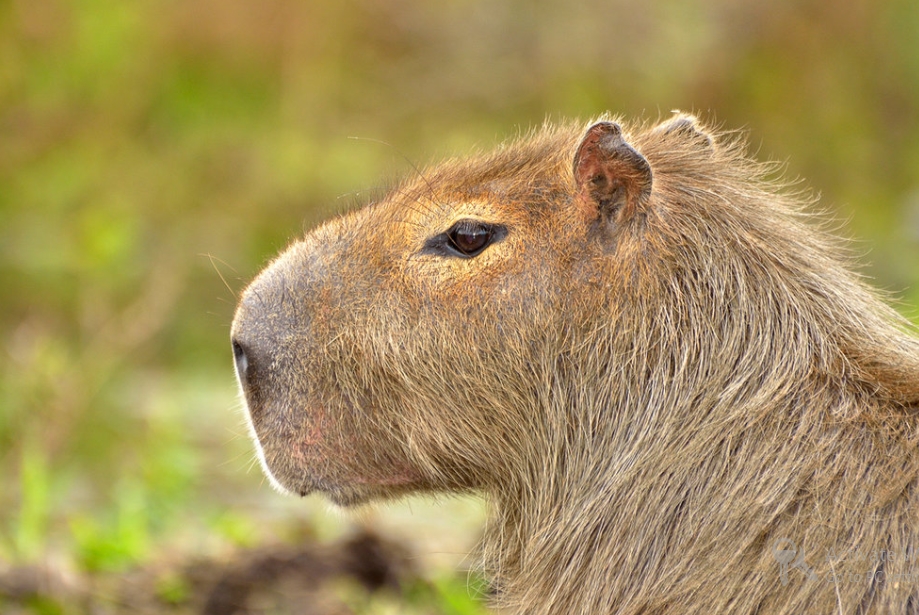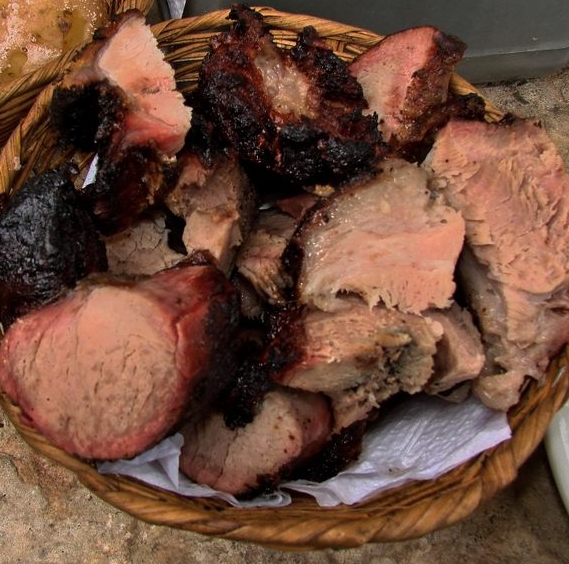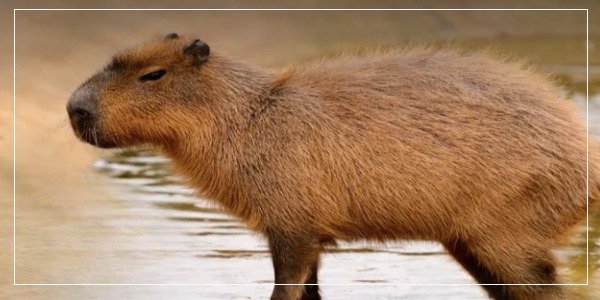Capybaras, the world’s largest rodents and are threatened by so many land animals, from large snakes that eat them to four-legged carnivores. But their number one threat remains the two-legged omnivores, humans. Humans hunt them for so many reasons as they do other animals.
The fact that humans need them for other reasons aside from food, like perfume, clothes, etc, makes us the number one threat to capybaras. Capybaras are hunted everywhere they live. Even the laws put in place to curb the rate at which they are killed are often disobeyed by locals. The high demand for this rodent has nearly led to its extinction.
But as a species, they are not endangered. However, at the rate at which they are being hunted, it should not come as a surprise if this changes in the near future.
Below are some of the reasons humans hunt capybaras:
Do People Eat Capybara Meat?
Capybara meat is often described as the best meat in South America. It is very popular, and it sells for twice the price of regular beef. The capybara has a distinct taste when compared to that of other rodents.
Its meat is so popular that it has achieved a status in Venezuela similar to that of turkey. Before Easter, there is a seasonal hunt, and during Thanksgiving, some prefer to feast with capybara than the usual turkey.
Locals say its distinct taste bears a resemblance to a mixture of fish and pork. Venezuelan Catholics insist that the rodent is more akin to fish than meat so that they can eat it during the Lent period when the Catholic Church forbids meat consumption.
Hunters nearly wiped out the entire population of capybaras in Venezuela if not for the hunting limit imposed by the authorities. Similar cases have also been recorded in other countries in South America. Professor Rexford Lord of the Indiana University of Pennsylvania detailed in his book that the capybara meat is so delicious.
It can be likened to rabbit or fish, but this is based on how it is prepared. Even the most prominent citizens in Venezuela enjoy it. Not minding the fact that it eats its own feces. However, it is more popular in rural areas than in urban.
What Does Capybara Do For Humans?
In countries like Brazil, the capybara is hunted for its skin because there is a special fatty substance that covers its hair, and that substance is used in perfume production.
The soft hides of the capybara are used to produce one of the best leather brands in the market. The “carpincho” leather. This is a very popular and luxurious leather, and it is highly recommended by experts if you are hoping to purchase exotic leather.
Let me tell you the origins and features of this wonderful material.

The carpincho leather is often likened to peccary leather because they are mostly used to produce gloves, and they share about the same level of desirability. Carpincho is the Portuguese name for capybara.
Capybara is a Spanish name, but it is more popular in English-speaking countries. Even in some countries where it is illegal to hunt capybara, farmers breed them on farms, and their certified hides are legally used to produce leather.
Some of the best carpincho leather grades are found in Argentina. The resulting leather is soft when touched, but it is very strong and durable.
Its natural color is rust-brown or oxide. It may appear with some designs or marks to enhance its beauty. Some of these weren’t put there by the manufacturers but by the capybaras when they fought with themselves. Anyways, it still helps to enhance the beauty of the product.
The carpincho leather produces gloves, wallets, bags, belts, boots, and other clothing materials. The carpincho leather will surely add beauty to your overall outfit, and it will even get comfier as years go by. But there is a downside to this beauty.
It should not be allowed to get wet because if it does, it should be left to dry in a cool place. This material was not made to be exposed to elements like water. Another disadvantage is the price of the product, it is known to be expensive, and this should not come as a surprise, seeing that it has a special place in the market.
Moreover, the leather does not put the owner through stress in terms of maintenance. Just a little cleaning and polishing will keep it looking new for a very long time. Regarding comparison, only the Peccary, Elk leather, Reindeer, Chamois, and Cabretta leather comes close because they all have similar quality.
Can Capybaras Be Used For Oil Production?
Another benefit of capybara meat is that it can be used to make oil, which contains medicinal and healing properties. In some countries, capybara oil is used for the healing of wounds.
While there have been studies to investigate the effects of this oil on injuries in smaller life forms like rats, it has not been scientifically proven that this oil helps wounds heal faster.
The local South Americans apply this oil on all kinds of skin traumas, from bruises to cuts to inflammations. There are studies that claim there is a significant improvement when this natural product is applied to affected areas. Scientists also believe that the oil extracted from capybara fats can reduce cholesterol levels in rats.
In Paraguay, it is used as a tonic for children because it helps relieve symptoms of asthma, bronchitis, and rheumatism. But as I said before, none of these have been scientifically proven, so any user should proceed cautiously.
It might have diverse effects on the person even though there have been no cases of negative outcomes recorded.
Is Capybara Meat Healthy For Consumption?

Capybara meat can be consumed by humans as it is 100% healthy for consumption. Capybara meat is very rich in protein and polyunsaturated fatty acid, and it is also low in cholesterol and fat.
A study finds that capybaras that were raised in habitats similar to the natural ones they had were said to contain low levels of saturated fatty acids. Other qualities of capybara meat, such as high emulsification, mean that it will be able to compete with pork in the market.
It is very popular in Venezuela, and at least 400 tons are sold every year because of the high demand for it during the festive season. Mr. Saul Gutierrez, a biologist in Venezuela, recommends capybara meat as a great alternative to red meat, especially for people who are cautious of their cholesterol levels.
Do Humans Eat Capybaras?
Capybara meat is consumed in most South American countries. Humans hunt capybara for food and other reasons, but mostly for food.
In Venezuela, it has earned a place in the market and is sold for twice the price of normal beef. It is considered a delicacy, and it has its own season.
Not minding the fact that the capybara is an animal with a good escape mechanism, this makes it very hard to catch. Hunters embrace the challenge willingly because it is more rewarding.
A professor from the United States says the capybara should be exported, and foreigners will love it. He can imagine hot dogs, sausages, and other snacks being produced with capybara meat and them gaining popularity because of it.
In Venezuela, the demand for capybara meat got so high that hunters nearly wiped out the entire population of these rodents in the country. Several laws were put in place to try and curb the killings, but locals still disobey the law daily.
Researchers conclude that just about one hundred thousand capybaras are left in the country. The capybara meat recipe is enjoyed by thousands of meat lovers; even the president has promoted the capybara delicacy on television before.
In some other countries like Canada, the United Kingdom, etc. The sale and consumption of capybara meat may never be accepted because most people will not welcome the thought of having a rodent on their dinner plate. But if they try it, I’m certain they will love it.
What Does Capybara Meat Taste Like?

Locals in Venezuela say it tastes like fish and pork at the same time, depending on the preparation. Many consumers confirm it tastes more like fish than meat because it spends most of its time in the water. Although merely looking at it on a saucer, it bears a stunning resemblance to red meat.
It is quite difficult to determine the taste of the capybara because it is always shredded, grilled, dried, or prepared with salt. Different methods affect the taste of the meat.
For example, in Venezuela, where it is considered a delicacy, they eat salt-cured capybara during festive seasons. In Latin, capybara is referred to as “Hydrochoerus”, which means water pig because capybara is just seasoned pork to them.
Which Countries Eat Capybara?
Capybara is mostly consumed by South Americans, from Argentina to Bolivia, Brazil, Chile, Colombia, Costa Rica, Ecuador, El Salvador, Guatemala, Honduras, Mexico, Nicaragua, Panama, Paraguay, Peru, to the Dominican Republic, and Uruguay.
They all eat capybara, but the rodent delicacy is the most popular in Venezuela. It has gained popularity to the extent that it competes with Turkey during festive seasons. However, it is more consumed in rural areas than in urban. There are recorded cases of when the animal was nearly wiped out, and currently, there are no more than a few hundred thousand in the country.
Even during Lent (when the Catholic Church forbids meat) they have convinced themselves that it is mostly fish than meat, so they can eat it during Lent. Some rich folks still splurge good cash to have it on their plates.
Even the local laws that have been put in place to stop excessive hunting have not been effective, hunters still go the extra mile to hunt capybaras illegally because of their meat.
Can Catholics Eat Capybara During Lent?
Legend has it that a few hundred years ago, the capybara meat was so desired among the Catholics in Venezuela. So they wrote a letter to the Pope to classify the capybara as fish because it has a similar taste to fish and pork, and it spends most of its time in the water.
During a forty-day period in Lent, meat consumption is prohibited every Friday in Catholic homes. Although during the time that this rule was passed, much research was not done on the capybara, and there was no access to vast information about the rodent as there is now.
But even so, the animal doesn’t look like a fish; a drunk man could describe it as a smaller hippopotamus or a large guinea pig but certainly not a fish species.
These Catholics just found a way to continue eating meat during Lent. The funny part is that capybaras are still served as fish in most Catholic homes and Entries during Lent, given the vast information about this mammal in every corner of the internet.
It depends on the individual, their belief, and how devoted they are to the Roman Catholic faith. There are other meat alternatives that you can eat during Lent.
While Capybaras, pigs, cows, rams, sheep, goats, chickens, and other birds are considered meat, Catholics can try out amphibians, reptiles, and other salt and freshwater fish species during Lent. You can eat it during Lent, but that’s not right since capybara is a source of meat.
Do Catholics Consider Capybara As Fish?
On a large scale, they do. They consider capybara fish and consume it during the Lent season. Ever since the Pope classified it as fish hundreds of years ago. Numerous Catholics have used that as a “go-ahead order” to consume it during lent seasons.
Only those who are truly devoted and have ample knowledge about capybaras abstain from it during lent seasons. Catholics classified the capybara as fish for these two reasons.
1. The Amphibious Lifestyle Of The Capybara
Capybaras are semi-aquatic. They love to swim and can even hold their breath for nearly five minutes. They can swim for as long as they like as long as their heads are held up a bit above the water so that they can breathe; they can even sleep in the water. This way of life made the pope classify them as fish in the 1800s.
2. Its Distinct Taste
Many locals, foreigners, and scientists have confirmed that the capybara tastes like fish. Not entirely, but with a little touch of pork. It is kind of hard to explain.
But research shows that different preparation methods affect the taste of the capybara. Its distinct taste was also a contributing factor.
Conclusion
I hope this article was worth your time and that you were able to find answers to all the burning questions in your mind. Let me give you some important pointers before I call it a wrap.
- Humans hunt capybaras primarily for their meat.
- Catholics consume capybara during Lent because the Pope classified it as fish in the 1800s.
- Soft capybara hides are used to manufacture one of the best leather brands in the market (the Carpincho leather)
- Capybaras can sleep in the water and stay underwater for up to four minutes.
- Capybara meat is a great alternative for meat lovers conscious of cholesterol
levels.
RECOMMENDED: Where Is It Legal To Own A Capybara Pet In the United States
Do you have any questions after reading this post? Kindly ask using the comment section below, and we will fastly attend to it. Thanks for reading, and don’t forget to share this with someone.


![Can Capybaras Wear Clothes - Can I Dress My Capybara? - [Answered] Can Capybaras Wear Clothes](https://capybaratips.com/wp-content/uploads/2022/03/Capybara-on-clothes.jpg)






